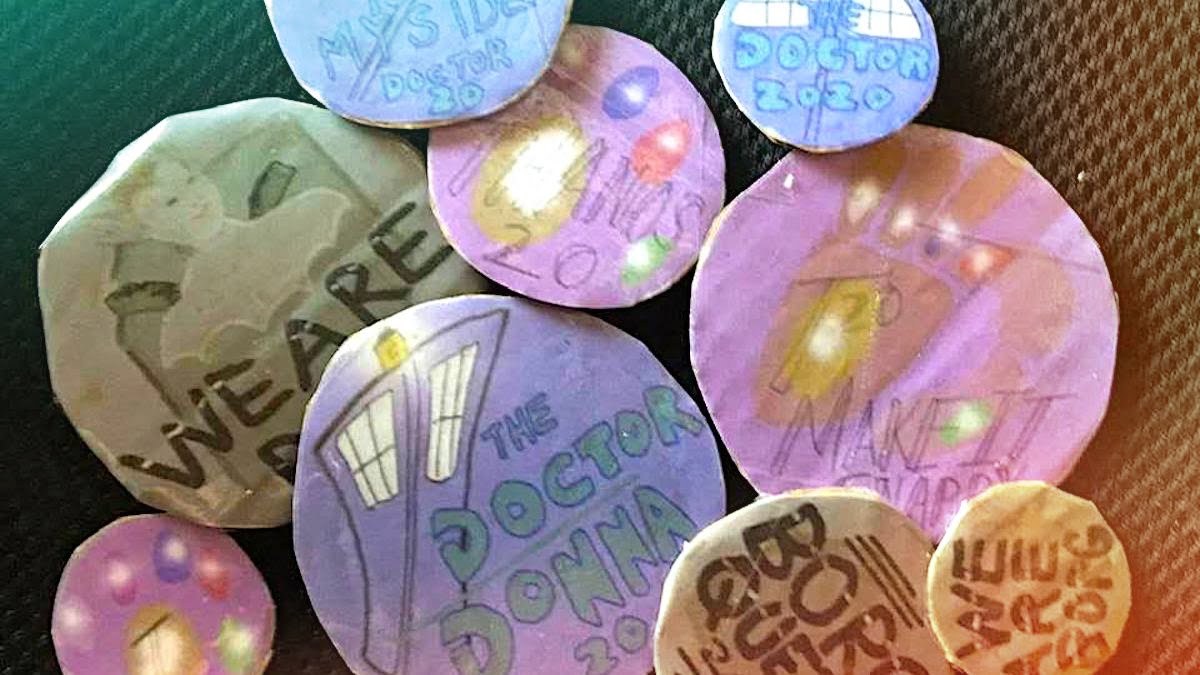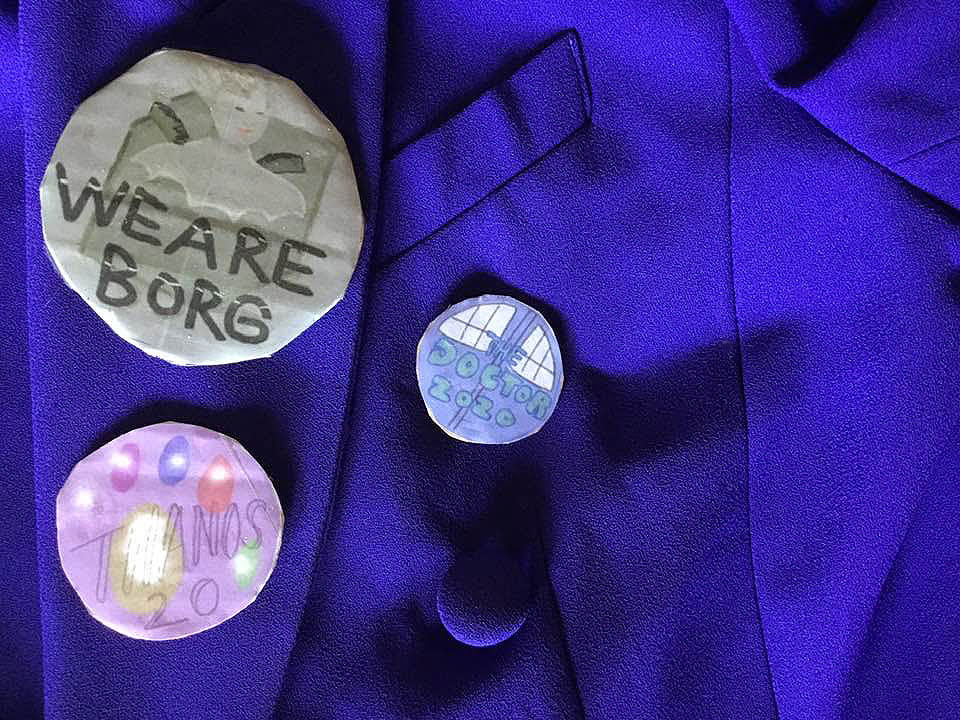
This summer’s Be The Artist 2020 focuses on art and design created with a specific purpose in mind.
Author’s Note: The actual political buttons featured in this post represent early and some more recent political candidates from various parties and eras, but not the current election year. No party or candidate is being endorsed through this post. This is just to show the design method.
The Purpose: Promoting a Candidate with Political Buttons
The year 2020 is a Presidential Election year, and no matter who someone is voting for, they will likely recognize the campaign buttons for the main contenders. That is because this little round celluloid piece of jewelry is one of the simplest, most efficient (and portable) ways to spread a campaign message or push a candidate.
According to information from the National Park Service’s Gateway Arch National Park in Missouri (that has a some valuable historic buttons in its collection), the first American president to really take advantage of the political button as part of his campaign was Abraham Lincoln in 1860, although presidents and politicians had been using similar structures like little metal pins as far back as George Washington.
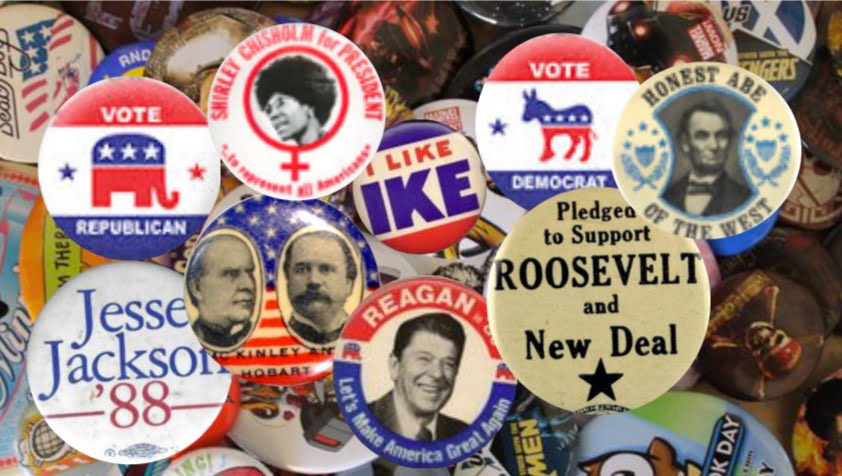
The first time there were mass produced buttons in a presidential campaign, it was in 1896 during the race between William McKinley and opponent William Jennings Bryan, making buttons for either of these candidates sought collectibles. Political buttons remain a popular collector items for history buffs, and some buttons from various campaigns have sold anywhere from $20 to hundreds of dollars, but some rare designs have even fetched more than $50,000.
Of course political candidates aren’t the only things this little wearable pieces of promotional art have pushed everything from social commentary to comic cons to bands.
No matter how much the candidates, conditions and challenges change over the years, the little celluloid button, a simple design that sends a big message, will likely be part of it.
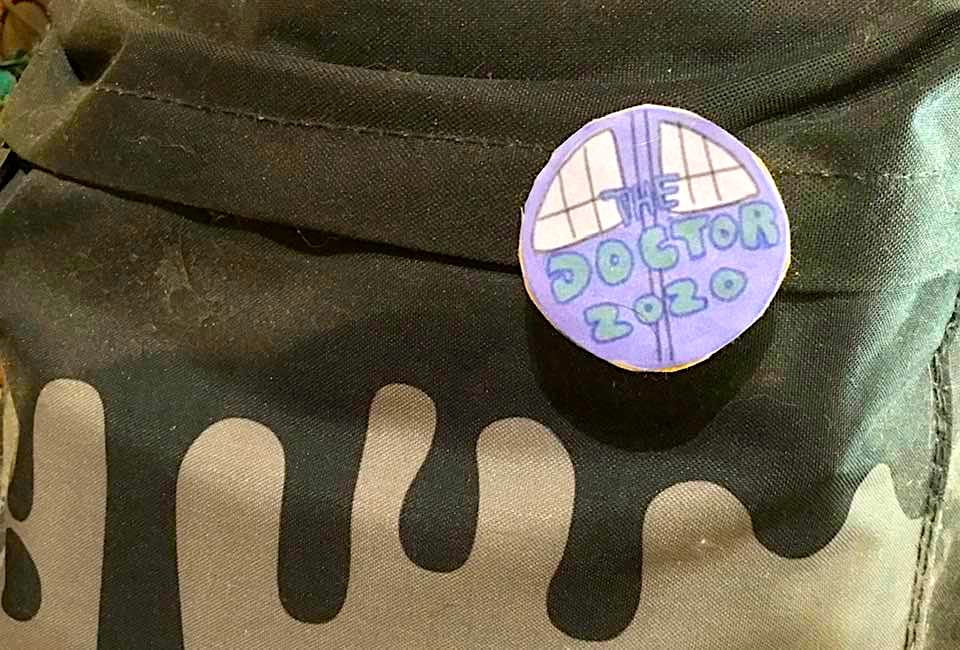
The Project: Otherworld Leaders
Election years here on Earth can get pretty emotional and heated, so for this project were taking the campaign off-planet to help out some fictional leaders, movers, and shakers, from other worlds.
Since the last project we did was on propaganda posters, there is one thing big difference between the message you can get on a campaign button and one being pushed on a poster: limited space.
With a political button, even the larger sizes ones, you have to say a lot more in less space, and it has to be something that is readily recognizable. This is often why many political buttons stick to the basics…the candidate (or candidates) names and the year they are running. Some candidates prefer a “head shot” to go with the button, in case you need to put a face with the name.
However, some candidates have done well from creating a short slogan: “I Like Ike,” for example. Wikipedia has a good, solid list of most Presidential campaign slogans dating back to 1840 to this year’s elections for inspiration.
First, using a glass, cookie cutter, or jar lid (preferably three different sizes) trace your button outline on piece of white cardstock or sturdy drawing paper.
For your candidate, we’re going to make a set of three button designs using bright colored pencil, marker or pens. The three should include:
- A simple one that utilizes just their name.
- One that shows off a specific slogan…
- One with either a “head shot” or a logo.

Start out making your button designs on a plain piece of paper. Try creating three designs for one “candidate” keeping with a similar theme.
For example, Marvel’s Thanos might have run a campaign he might say something like “Make It Snappy,” or Emperor Zurg from Toy Story might take advantage of the “Z” logo. Loki, campaigning for King of Asgard, would definitely play on his vanity and want his face featured.
Whoever you chose, and whatever you choose, keep all three designs consistent enough so people will recognize three completely different buttons as representing the same candidate. Do this from incorporation of the logo in all three, making use of the color scheme in all three buttons the same. Make sure that anyone who sees one of the buttons will easily recognize the other two as part of the same campaign.
Now the fun part: making the actual button. As not everyone has access to a button maker, were going to build the campaign buttons ourselves.
First, cut out the three button designs, and place them on a piece of cardboard, or plastic (lids from used plastic containers work well).
Cut the cardboard out to fit the circle, and glue the paper design on top of it. Gently cover the front with clear packing tape or a laminating sheet cut just a little bigger than the button. Fold over the edges for a secure slick button.
To finish it off, use a glue gun or more packing tape to attach a jewelry pen bank or a safety pin to the back.

Now the button is ready to wear on your lapel, lanyard or book bag, letting everyone know who you with whom you stand…on another world.
Learning about how simple words may sway a vote or attract new voters, these little fictional campaigns could be a gateway for younger crafters to learn how design and visual aesthetics can help shape a campaign or movement, even on this planet.
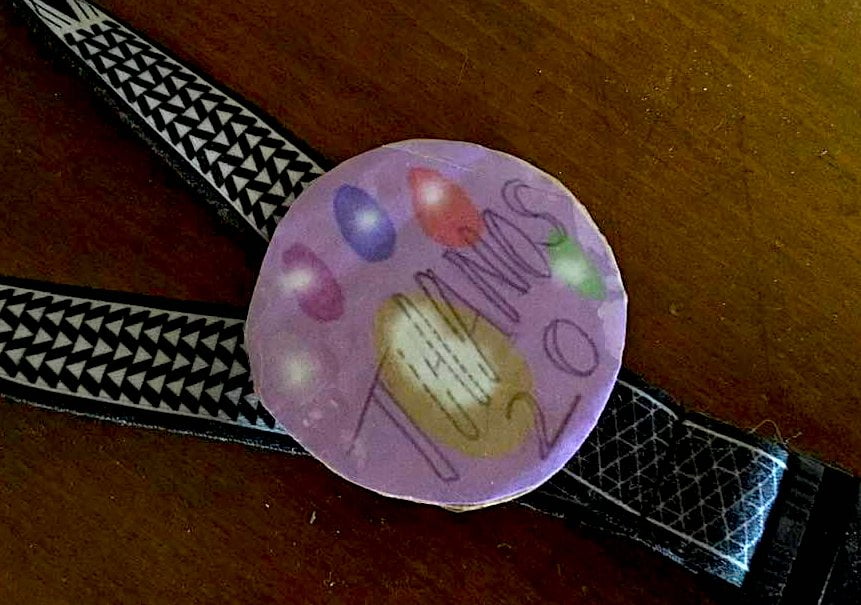
Even the nonpolitical have a little campaigning in all of us. As author Roald Dahl said once on social change: “Somewhere inside of all of us is the power to change the world.”
